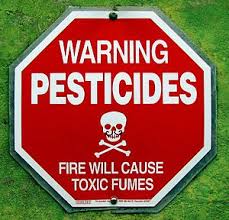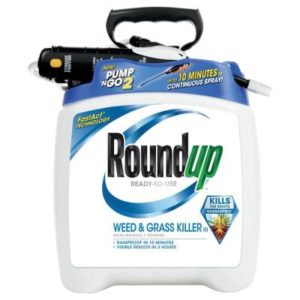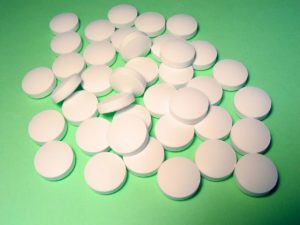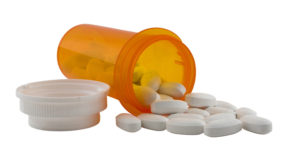
Another study with concerning results for children and pregnant women has been published. This time researchers found a commonly used fungicide in a majority of children and all pregnant women studied. Some children had chronic exposure. A small study, but still...
The fungicide is azoxystrobin, and is commonly used on crops (e.g., cereals, grapevines, potatoes, fruits, nuts, and vegetable crops), lawns, and in mildew and mold-resistant wallboard used in home construction. The fungicide migrates out of the wallboard (sheetrock) and is found in house dust. Thus, humans can have chronic exposure to it.
And yes, this fungicide has worrisome health effects in animal studies - for example, toxic to embryos, neurotoxicity, brain inflammation. Studies in pregnant mice found that the fungicide went from the mother to the developing babies by crossing the placenta and then entered the developing brain. Much is unknown and studies need to be done!
The problem is that in the USA chemicals are easily approved by the government for use, and it is up to consumers and researchers later to prove harm. But typically that is not enough to get any changes and the chemicals in question keep on being produced and used and causing harm.
What to do? Eat organically grown food. The fungicide is not allowed on organic crops. Don't use pesticides on your lawn. If renovating or constructing a home - avoid mold and mildew-resistant wallboard brands.
From Medical Xpress: Scientists detect common fungicide in pregnant women and children
For the first time, UNC-Chapel Hill researchers have measured the concentration of a biomarker of the commonly used fungicide azoxystrobin (AZ) in the urine of pregnant women and children ranging from 40–84 months of age. They also documented maternal transfer of AZ to mouse embryos and weaning-age mice. ...continue reading "Commonly Used Fungicide Detected In Pregnant Women and Children"

 Well, it looks like the medical advice for avoiding food allergies in children has come full circle. For decades health professionals said for babies to avoid eating problem foods (e.g., eggs, dairy, peanuts) if parents have food allergies. But..it turned out that following this advice did not prevent food allergies.
Well, it looks like the medical advice for avoiding food allergies in children has come full circle. For decades health professionals said for babies to avoid eating problem foods (e.g., eggs, dairy, peanuts) if parents have food allergies. But..it turned out that following this advice did not prevent food allergies. New advice: Infants should have early exposure to potentially problem foods, starting as early as 3 months, to lower their risk of developing food allergies. Delaying the introduction of these foods actually increases the risk of food allergies. (By the way, the same advice also holds true for avoiding pet allergies - exposure to furry pets in the first year of life is important.)
New advice: Infants should have early exposure to potentially problem foods, starting as early as 3 months, to lower their risk of developing food allergies. Delaying the introduction of these foods actually increases the risk of food allergies. (By the way, the same advice also holds true for avoiding pet allergies - exposure to furry pets in the first year of life is important.) We all get exposed to pesticides to varying degrees - whether from our water, foods we eat, inhaling them, or absorbing them through our skin (e.g., walking or playing on pesticide treated lawns). Unfortunately, studies show our exposure to the pesticide glyphosate (found in Roundup) is increasing each year.
We all get exposed to pesticides to varying degrees - whether from our water, foods we eat, inhaling them, or absorbing them through our skin (e.g., walking or playing on pesticide treated lawns). Unfortunately, studies show our exposure to the pesticide glyphosate (found in Roundup) is increasing each year. Glyphosate is the most widely used herbicide (it kills vegetation) in the US and the world. Nearly 300 million pounds of the pesticide are applied each
Glyphosate is the most widely used herbicide (it kills vegetation) in the US and the world. Nearly 300 million pounds of the pesticide are applied each  Another
Another 
 Many studies show that antibiotics disrupt the gut microbiome (intestinal microbial community of bacteria, viruses, fungi) in adults, but what about infants? A
Many studies show that antibiotics disrupt the gut microbiome (intestinal microbial community of bacteria, viruses, fungi) in adults, but what about infants? A  Pregnancy should last 9 months, but sometimes it doesn't. With medical advances some babies born as early as 22 or 23 weeks can now survive. Truly miraculous! But how are these extremely preterm babies doing long-term?
Pregnancy should last 9 months, but sometimes it doesn't. With medical advances some babies born as early as 22 or 23 weeks can now survive. Truly miraculous! But how are these extremely preterm babies doing long-term?
